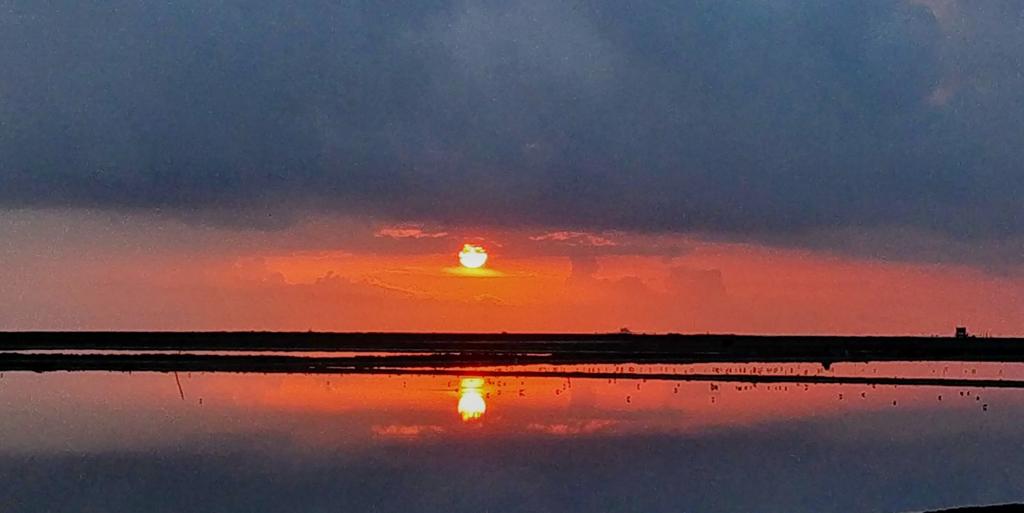India
Author: Gururaj Moorching
Stories from the Field: Spoon-billed Sandpiper
Stories from the Field: Birding with Clement Francis
Stories from the Field: Andaman and Nicobar Islands
Year 2015 was special for Shashank Dalvi. It was his “Big Year” – a birder’s personal challenge to identify as many species as possible within that time period. I had the opportunity to bird with him and learn from him earlier in the year. He is truly devoted to nature and fills up your brain with tonnes of useful and jaw-dropping information on all creatures in the wild. He decided to wrap the year finding the Nicobar Megapod and was travelling to the Andaman and Nicobar Islands. He managed to obtain permission with several Government departments for himself and our group of 8 birders to travel to Central and Great Nicobars before closing the year in Gujarat.
We were to leave for Port Blair on 15th December, and the timing couldn’t have been worse. Chennai and the east coast of India was drowned in rains. Ominous clouds moved in fast-forward mode. It was like watching a horror movie.
Nature’s fury rendered people and their deities helpless. Bridges and dams tumbled down. People were stranded in higher floors. More than 15 feet of water covered the low-lying residential areas. The expedition was 5 days away.
I googled the weather pattern over Andamans and Nicobars. I could not see a bit of land. Just purple swirls. The first ever trip with legal documents to travel to any of the islands of Central and Great Nicobar might get washed out due to rains. Continue reading
Bird of the Day: Tickell’s Blue Flycatcher
Bird of the Day: Grey-Headed Woodpecker
Bird of the Day: Demoiselle Cranes
Bird of the Day: Common Emerald Dove
Bird of the Day: Rufous Sibia
Bird of the Day: Fire-breasted Flowerpecker
Bird of the Day: Red-headed Bullfinch
Bird of the Day: Yellow-breasted Greenfinch
Bird of the Day: Brown-winged Kingfisher
Bird of the Day: Hair-crested Drongo
Bird of the Day: Green-backed Tit
Stories from the Field: The Great Rann of Kutch, Gujurat
6 months after the Kaziranga trip, I started reading about the birds of India. I was very surprised to learn that we had more than 1,200 species across the country. I ventured out a bit, driving around Bannerghatta National Park and Hesarghatta Lake. Photographing birds isn’t as easy as one would think. They are flighty and fickle. I captured several images of “bird-less” perches and returned home with “bird-less” memory cards as well.
I was 56 years old and time was not on my side. I began to list out important birding areas in the country. This way, I could focus on numbers- my goal being to reach 500 birds before my health deteriorated. I chose birding locations that were easily accessible by car. Gujarat and Uttarakhand had large bird counts and winters were ideal for birding.
I decided to travel to the Great Rann of Kutch during November 2012. I didn’t want any delay seeing and photographing birds. I needed the right gear and I purchased a Canon 1D mark14 with a 500 mm f4 lens. A friend of mine drove me to Kutch, making it an easier trip for me. We chose a Homestay run by a famous conservationist and bird guide, Sri. Jugal Tiwari. All the rooms were named for beautiful local birds, which was very inspiring. I chose the Grey Hypocolius room just because the name sounded exotic. Most special was the fact that each room had books by the bedside,
mine had two about the world-famous birder, Phoebe Snetsinger.



















 We stayed at the Wild Grass Lodge amidst the intimidating presence of huge lenses and heavy gear.
We stayed at the Wild Grass Lodge amidst the intimidating presence of huge lenses and heavy gear.
